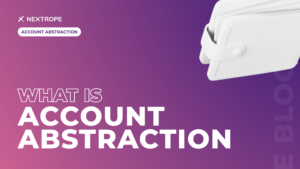Account abstraction is a new way of thinking about how users interact with blockchains. Instead of using traditional externally owned accounts (EOAs), account abstraction allows users to create and manage their accounts using smart contracts. This has a number of potential benefits, including improved security, enhanced privacy, and increased flexibility.
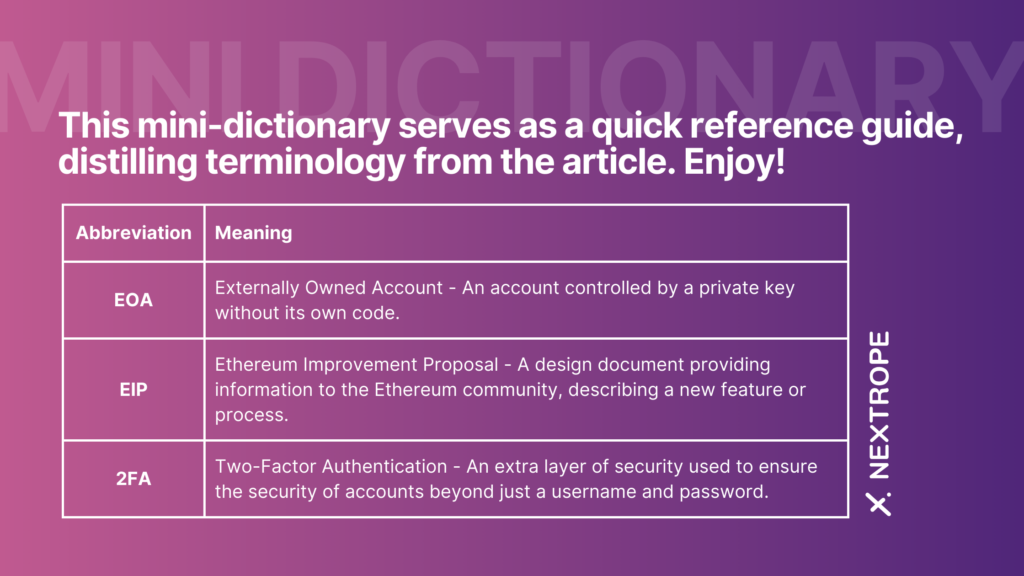
What is account abstraction?
Account abstraction is a concept that, at its core, aims to simplify the user's interaction with blockchain networks. It is a transformative approach that seeks to mask the technicalities of blockchain operations from end-users. It is making transactions as straightforward as sending an email. Account Abstr. allows users to interact with the blockchain without worrying about the underlying technical details.
How does account abstraction differ from the traditional model?
In the traditional account model, each user has an EOA. EOAs are controlled by private keys, which must be kept secret in order to protect the user's funds. Acc. abstraction allows users to create and manage their accounts using smart contracts.
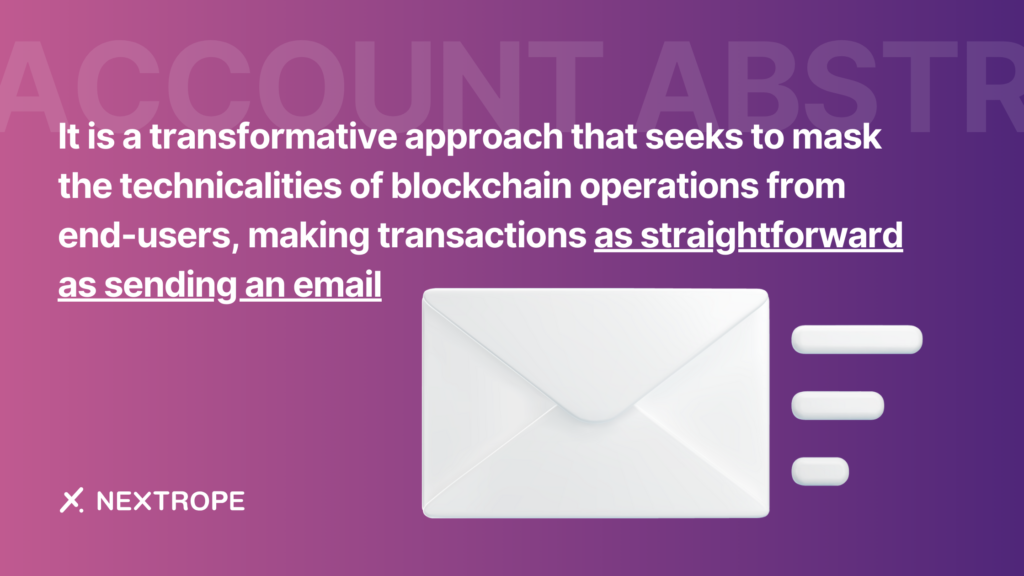
Historical Context
The journey towards acc. abstraction began with the first generation of blockchain technologies, characterized by their "one-size-fits-all" approach to account management. Bitcoin, for instance, introduced the concept of accounts and transactions in a form that was accessible to tech-savvy individuals but remained perplexing to the layperson. Ethereum expanded on this by introducing smart contracts, which opened the door to programmable transactions but did not alter the fundamental account structure. The idea of acc. abstraction has been discussed in the Ethereum community for several years as a part of various Ethereum Improvement Proposals (EIPs), particularly as a feature to be potentially implemented in Ethereum 2.0. It is a direct response to the need for a more versatile and user-centric design that can cater to a broader audience and spur the widespread adoption of blockchain technology.
The Technicalities of Account Abstraction
Account abstraction is not merely a theoretical construct but a technical innovation with specific mechanisms underpinning its operation. In essence, it alters the way transactions are initiated and executed within a blockchain network.
How Account Abstraction Works
Under traditional blockchain models, initiating a transaction involves an externally owned account (EOA) signing a transaction with a private key. This transaction is then broadcast to the network for validation and inclusion in the blockchain. Account abstraction, however, replaces this process with a more flexible one. Here, every account is a smart contract, and transactions are messages sent through these contracts. These smart contracts can encode complex rules for transaction validation, beyond what EOAs can do, such as multi-signature requirements or conditional transactions based on certain triggers.
The technical crux of account abstraction lies in the smart contract’s ability to define its own conditions for transaction execution. This means that user accounts can have unique security protocols or automated operations without the user needing to understand the underlying smart contract code.
Hey! Are you interested in the latest technologies in the blockchain area? be sure to read the article 'Top Zero-Knowledge Proof Projects to watch in 2023'
The Benefits of Account Abstraction
The implications of account abstraction are profound, offering a range of benefits that can enhance the blockchain experience for users and developers alike.
Improved User Experience
One of the most significant advantages of account abstraction is the improvement it brings to user experience. By abstracting away the complexities of key management and transaction rules, it presents a more intuitive interface for users.
Enhanced Security Features
Account abstraction also allows for the implementation of advanced security measures. Since each account can define its own logic, users can tailor their security settings to their specific needs. For instance, one might set up an account that requires additional verification for transactions exceeding a certain value or restricts withdrawals to certain addresses.
Future Implications
The future implications of account abstraction are vast. As the technology matures, it could become a standard feature of blockchain networks, potentially making the current distinction between user accounts and smart contracts obsolete. This could lead to a new wave of blockchain applications that are both powerful and accessible, bringing us closer to the vision of blockchain technology as a seamless part of everyday life.
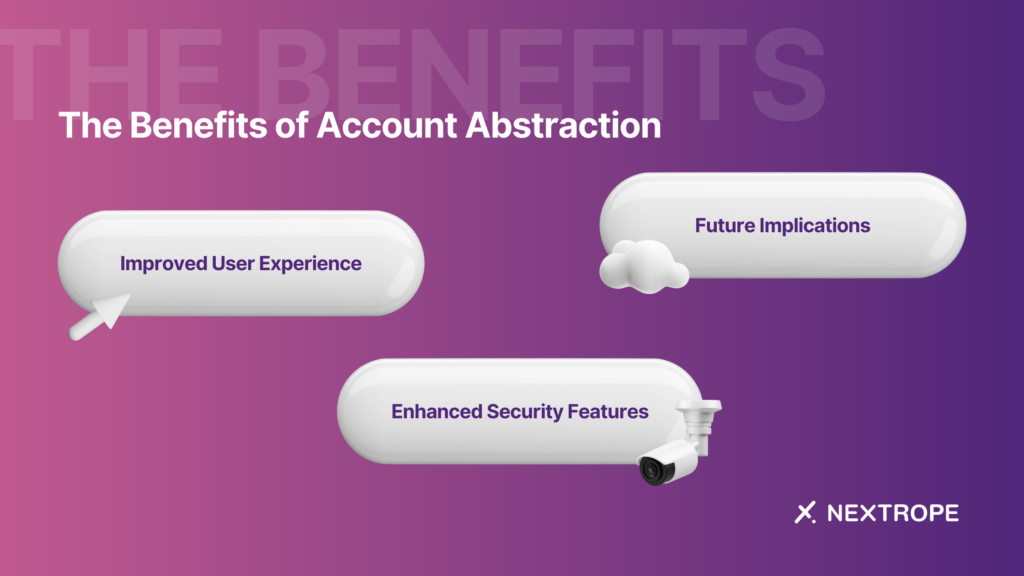
Challenges and Considerations
Technical Limitations
One of the primary technical challenges of Acc. abstraction lies in its integration with existing blockchain protocols. Current networks are optimized for the EOA model, and introducing a new account structure necessitates significant changes to the core protocol. This includes modifications to the way transactions are propagated in the network, how gas fees are calculated, and how the state of the blockchain is managed. Ensuring that these changes do not compromise the network's performance or security requires careful planning and extensive testing.
Compatibility with Current Systems
Another consideration is the compatibility of account abstr. with the vast ecosystem of existing blockchain applications and services. Wallets, exchanges, and other services have been built around the traditional account model. Transitioning to an acc. abstraction model will require these services to update their infrastructure, which may be a complex and resource-intensive process. Furthermore, there is a need for standardization across the industry to ensure that different implementations of account abstr. can work seamlessly together.
Conclusion
Acc. abstraction represents a significant leap forward in the quest for a more user-friendly blockchain experience. By streamlining the transaction process and offering enhanced security features, acc abstraction has the potential to make blockchain technology more accessible to a broader audience. However, the path to widespread adoption is not without its obstacles. Technical challenges and compatibility issues must be carefully navigated to integrate it into the existing blockchain landscape.
Key Takeaways
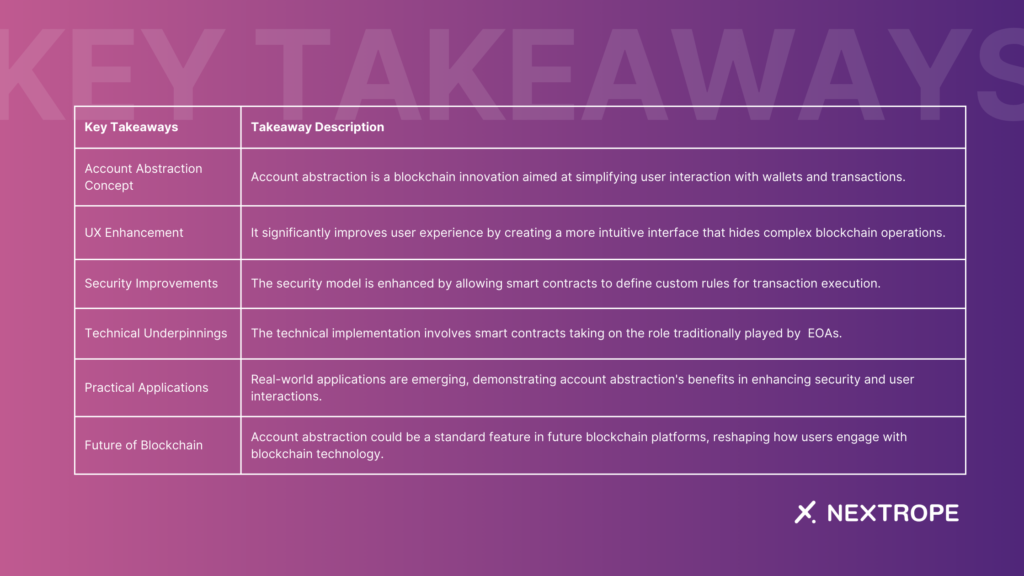
 en
en  pl
pl 
